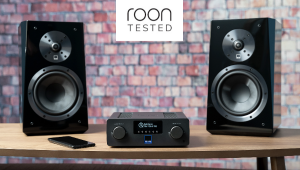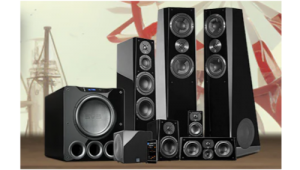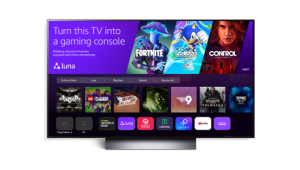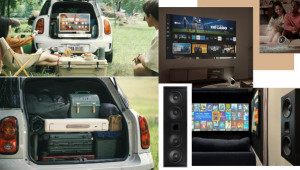Study: Voice Control Tops List of 2017 iOT Trends

Nearly 40 percent of U.S. smartphone owners use voice recognition software, a figure that increases to 46 percent of millennial smartphone owners, according to Parks’ “Top 10 Consumer IoT Trends in 2017” whitepaper. And overall, consumer satisfaction with voice products with has been positive, which is pushing voice recognition to platforms beyond the smartphone (think Amazon Echo).
“Siri and Google Now are seeing increased usage for queries and contextual information push,” the report said. “Voice recognition technologies are improving their accuracy and will eventually be able to interpret voice inflection and emotion. For instance, IBM’s Watson technology can understand natural language questions and search for information; Watson also has the potential to learn over time. Google Now and Apple’s Siri both use natural language to process information requests on mobile devices. Natural language processing is becoming widely available and voice recognition accuracy is increasing.”
From the report:
Amazon Echo, a smart speaker with a voice-controlled personal assistant, has shaken up the connected entertainment and smart home industries. The device streams music and uses natural language to handle a number of pre-programmed retrieval tasks (e.g., alarms, lists, weather, music, traffic) as well as to answer questions based upon Wikipedia. Users can even shop for insurance using their voice.Taking a broader view, Parks said the Internet of Things (IoT) is driving the reinvention of consumer technologies. “Connected products are taking on new form factors and providing new use cases, content providers are leveraging greater bandwidth to enable new content experiences, and data analytics offer solution providers a new source of customer insights to help them refine the user experience as well as develop next-generation products.”Amazon is aggressively building a large number of partners for its Echo device ecosystem and Alexa voice-control solution. Its partnerships with multiroom audio manufacturers such as Sonos create a home audio solution with voice control in every room.
Google also has a voice-activated speaker, Google Home, which is powered by Google Assistant. Google Assistant integrates Google search with personal user information to answer users’ questions and serve contextually and personally relevant information. Apple is expected to offer a similar solution powered by Siri.
Voice control has emerged as a highly desirable interface, and developers in the smart home, entertainment, and connected car ecosystems are pursuing partnerships to add voice control to their solutions. Alarm.com and Vivint have announced integration with Amazon Echo to provide users with a voice-control experience. Some production home builders have begun offering smart home systems to their customers—and some of these systems include (or will soon include) audio solutions. For example, Lennar now offers the Nexia Home Intelligence line to its new homeowners. Like others in the smart home space, Nexia has added voice control capabilities through its mobile app.
Right now, traditional means of control—like the remote control for entertainment devices, key pads for security systems and thermostats—dominate the connected home, with smartphones preferred for remote device interaction; however, more than one billion voice-enabled devices will be sold by 2021.
U.S. broadband households currently own an average of eight connected computing, entertainment, or mobile devices plus two connected-home devices such as networked cameras, smart thermostats, or mart lighting, according to the report. More than one-third of U.S broadband households also own a connected health device, and more than 63 million broadband households subscribe to an Internet-based video service.
“Consumer interaction with the devices and services in their lives—at home, in the car, on the go—will continue to evolve in 2017 to be more personal and targeted,” said Jennifer Kent, director of research quality and product development for Parks. “Approximately 50 percent of U.S. broadband households plan to buy a smart home device in the next 12 months, and they will tie these devices to their mobile platforms, broadband connections, and other devices to create a singular but ever-expanding user experience.”
The top 10 trends identified by Parks are…
1. Voice control is vying to become the primary user interface for the smart home and connected lifestyle.
2. The smartphone market plateaus, and mobile carriers experiment to retain subscribers, which will threaten fixed broadband services.
3. CE manufacturers focus on new product categories and ecosystem strategies to compensate for stagnation in a mature market.
4. Virtual and augmented reality gain a foothold in niche operations and greater awareness among early adopters, creating opportunities for social VR experiences.
5. The differences between on-demand and live viewing continue to blur as consumers embrace a variety of OTT video services.
6. Consumers increasingly expect connectivity in their cars, but pricing, safety, and data privacy concerns inhibit market growth.
7. To cross the chasm, the smart home industry will continue to develop new use cases for security, peace of mind, and energy management.
8. Insurers are exploring new business opportunities in smart home products and services and will continue to launch trials and new partnerships.
9. Wearables and smart watches are expanding as healthcare tools and will be integrated with other IoT applications.
10. Consumerization of healthcare services and devices drives integration with smart home ecosystems and new business models.
“The Internet of Things is driving the reinvention of consumer technology and entertainment markets,” said Brett Sappington, senior research director at Parks. “New players and product categories are emerging that challenge traditional players with established business models and distribution channels. Online giants have the scale and technology to take risks in new areas of innovation. In some cases, these innovations are transforming whole sectors of the connected home.”
For more information visit parksassociates.com.
























































